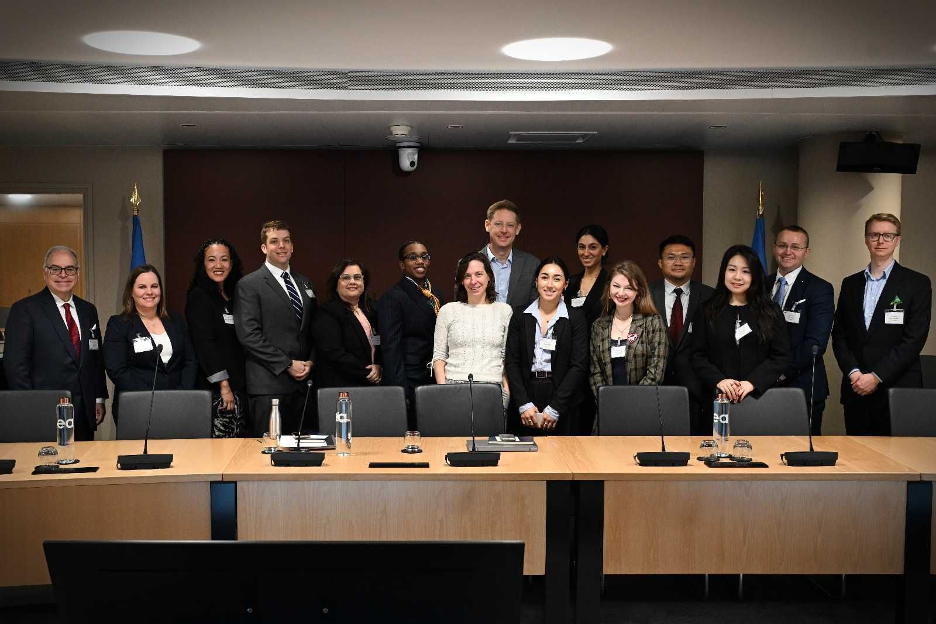I never imagined that certain academic skills would come not from textbooks, but from an immersive experience halfway across the world. This year, the second-year Master of Global Affairs
cohort embarked on its inaugural trip to Paris, France, participating in a negotiation masterclass co-hosted by the Institute for Global Negotiation, Rice University’s Master of Global Affairs, and the newly established Rice-In-Paris. This week-long immersive experience changed how I thought negotiation should be taught and learned.
Sharing these insights is, in part, about democratizing information. If this type of experiential learning piques your interest, consider applying to Rice’s Master of Global Affairs program and checking out the Institute for Global Negotiation, which actively seeks new student members.
Below is a recap of the experience and how these Global Affairs Owls gained negotiation skills from the trip.
Negotiation Simulations That Felt Real
A major highlight of the trip was the series of negotiation simulations that Patrick and Jack put on for us, each of which led up to and prepared us for the final, all-day negotiation simulation on a G-7 sanctions agreement.
The first two simulations featured a brief Red-Blue Game followed by a negotiation showdown inspired by a hot sports controversy involving the City of Paris and Paris Saint-Germain F.C.
The Red-Blue Game is a negotiation simulation that highlights the strategic decision-making process similar to the Prisoner's Dilemma, a classic concept in game theory. The simulation originated from the Rand Corporation during the Cold War, designed to model the strategic decision-making of two nuclear superpowers who perceived each other as adversaries yet who needed eachother’s cooperation to avert existential catastrophe.
Choosing one color signals a collaborative approach, which if mirrored by the opposing team, yields a mutually beneficial but modest reward. On the other hand, selecting the opposing color indicates a competitive stance that can lead to high gains if the other team chooses the opposite, but severe penalties if both teams choose the selfish (high-risk, high-reward) option.
In the Prisoner's Dilemma, two individuals must independently decide whether to confess or remain silent. The optimal choice for each, from a purely self-interested perspective, is to confess, leading to a worse collective outcome than if they had both stayed silent. This illustrates the core dilemma: the tension between individual rationality and collective benefit. The Red-Blue Game and Prisoner’s Dilemma illustrates how a win-win mindset leads to steady but modest gains, fostering trust and collaboration. Conversely, a win-lose, or zero-sum, mindset can yield short-term success but risks retaliation and escalating losses if both teams adopt an overly competitive stance.
The second, shorter simulation brought the excitement of sports into the mix! It centered around the ongoing drama with Paris Saint-Germain (PSG). In recent years, PSG’s Qatari owners have poured millions into upgrading the iconic Parc des Princes stadium, which is technically still owned by the city of Paris. As tensions over ownership and investment mount, the team has even threatened to move to a different venue. On the other hand, many French people feel that the team is losing its cultural identity and value, making them reluctant to see the stadium sold to a foreign owner. The question is, if the team were prepared to leave, how could the team’s owners and city officials negotiate a compromise that satisfies the owners’ financial interests while preserving the team’s Parisian spirit for the city’s constituents?
The third negotiation exercise was longer and more deeply rooted in real-world international diplomacy. This exercise was inspired by the insider stories of the 2015 Paris Agreement negotiations, which successfully brought together global governments to cooperate on climate change despite significant political divides. This simulation was led by Dr. Hayler Walker, Assistant Professor of International Negotiation at the IÉSEG School of Management, and an expert on climate diplomacy.
In this simulation, each participant played the role of a key protagonist, representing different countries and stakeholders involved in the actual negotiations. I took on the role of a U.S. negotiator, guided by the strategic insights of Susan Biniaz, the lead climate lawyer for the U.S. State Department during the Paris Agreement talks. From the U.S. perspective, there were a couple of key objectives for the Paris negotiations. Namely:
- The inclusion of developing countries in binding commitments;
- Self-determined mitigation instruments;
- A workable legal structure; and
- Strong transparency and accountability mechanisms.
If you are interested in the details on each of these:
- The U.S. opposed the Kyoto Protocol's structure (the 1997 climate agreement that preceded the Paris Agreement but fell short in achieving its objectives), which placed binding emissions targets only on developed countries while exempting developing nations. To prevent a repeat of this "bifurcated" system, the U.S. pushed for a framework where all countries—including major “developing” economies like China and India—had to commit to climate action. Interestingly, the classification of China as a developing country is controversial, as this status grants benefits and incentives under many international agreements—privileges that some nations argue China no longer needs. A key moving point on this was the 2014 U.S.-China Joint Announcement on climate cooperation, which was instrumental in breaking the developed vs. developing country divide that had stalled previous negotiations.
- Unlike Kyoto’s top-down targets the U.S. advocated for a flexible, nationally determined system. Countries would set their own emissions targets (Nationally Determined Contributions or NDCs). This made participation more politically feasible while still encouraging ambitious commitments. This compromise was partially in reference to challenging the previously bifurcated system. Nationally determined contributions was a reinterpretation of the previous “Common But Differentiated Responsibilities (CBDR) principle” that created divisions in responsibilities between developed/developing classified countries.
- What is a “workable legal structure?” This consisted of two main parts: 1) In keeping with the first point, the U.S. insisted upon universal commitments, that regardless of whether they were binding or nonbinding, applied to all parties. 2) The U.S. supported a hybrid legal approach that combined binding and nonbinding commitments – with binding commitments applying to more procedural elements (targets, updates, reporting) that were more politically feasible to sign on to in a binding fashion. This approach may not actually “weaken” commitments, as peer pressure can be quite the effective tool at the international level. Notably, this point of compromise was essential in securing China’s and India’s participation.
- There were two main transparency goals from the U.S. perspective going into the negotiations: 1) to ensure that the new agreement included requirements to report not only on emissions but progress made in the implementation and achievement of mitigation targets, and 2) to move beyond a previous negotiations’ (Copenhagen 2009 Climate Summit, which also failed to deliver on a variety of important points) bifurcated approach, which applied a much less robust set of transparency standards for developing countries.
Overall, the objective for all participants (nations, civil society actors, industry, regional organizations, and multilateral organizations alike) of the Paris negotiations was to secure a global consensus on climate action while navigating complex geopolitical dynamics and economic considerations.
Through rigorous debate and strategic coalition-building, we learned that effective negotiation is about more than just appearing persuasive and charismatic—it's about understanding the perspectives and constraints of all parties involved.
One other interesting lesson I took away from this negotiation was that mistakes and accidents happen even in the most high-pressure, important places. Learning how to “put out fires” is just as important as learning how to prevent them. During the Paris Agreement negotiations, there was a critical typo in the drafted text that jeopardized U.S. support. The legal distinction between “shall” (implying a legally binding commitment) and “should” required last-minute intervention. "Should" is a softer term in international agreements, indicating expectation rather than obligation. Long-story short, shall included in the language of the typoed clause would have likely required Congress to agree to the text, which was not politically possible at the time. U.S. negotiators identified this critical issue at the eleventh hour and were able to, with the help and backing of the Chinese, persuade the French to tweak the drafted text once more. Prior to this, every party had signed onto the draft and agreed to no further changes, so the last minute intervention caused quite the stir.
The Final All-Day Simulation: Negotiating Coordinated Sanctions on Russia
The final negotiation simulation was an all-day affair. My team partner and I were guided by confidential instructions from the perspective of the Japanese delegation to the G7+1 negotiations on further Russian sanctions. The Group of Seven (G7) is an informal alliance of the world’s leading economies, known for driving influential global initiatives. It includes the U.S., U.K., France, Germany, Japan, Italy, and Canada. In this case the plus one was South Korea. The G7 had already set commitments to reducing dependence on Russian energy.
Our team’s mission was clear: to support international efforts backing Ukraine while simultaneously securing Japan’s energy needs and acting as a mediator between countries with more pronounced disagreements—particularly those heavily reliant on Russian energy supplies (mainly oil but also liquified natural gas (LNG)).
The simulation was initially divided into two main components: a couple of plenary sessions where all delegations were present, and bilateral and multilateral meetings where strategic alliances were forged and specific concessions made. The French delegation, entrusted with chairing the session and drafting the official text, held the "power of the pen"—a critical advantage in shaping the negotiation’s outcome. By controlling the language and structure of the agreement, France was able to define key terms, emphasize strategic priorities, and influence the final consensus, underscoring how authorship in diplomacy can be just as powerful as negotiation itself.
Strategically (for the sake of time), we first reviewed the draft text submitted by the U.S., which was provided to us in advance for this hypothetical scenario. The draft was combed through piece-by-piece at a first plenary, where each nation’s delegation had an opportunity to object to the text as it was given. Following this, we had parallel multilateral discussions to air out specific grievances on each clause, ultimately negotiating alternative versions for each.
Notably, actual multilateral negotiations typically don’t unfold this way. In reality, delegations are (1) rarely divided in this manner, and (2) generally lack the authority to approve a drafted text without first securing approval from their respective capitals. Yet, for this simulation, this structure worked as we were able to come to a set of mutually-beneficial compromises in record speed.
Each compromise involved a complex web of interconnected elements, often requiring trade-offs on one issue to gain concessions on another. Additionally, it involved uncovering shared interests that were not immediately apparent at the outset. This wasn’t just a role-playing exercise; it was a crash course in real-world diplomacy, communication, and, in some ways, crisis management.
Three really interesting pieces of skill-based and substantive knowledge I gained from this simulation were:
- Strategic Communication is Everything
In the simulation, our delegation had to balance geopolitical firmness with economic prudence. A successful negotiation is all about understanding the perspectives and constraints of all parties involved. Japan’s dependency on energy imports meant that aggressive sanctions on Russia could backfire economically. This required us to support sanctions with strategic caveats—a delicate balancing act of showing solidarity while protecting national interests. The takeaway? This is why active listening is so important in negotiation. It’s not just about what you say, but how you frame it to resonate with your audience’s interests. Active listening involves more than just nodding or waiting for your turn to speak. It’s about fully engaging with the speaker, resisting the urge to immediately relate the conversation to your own experiences. When you do this, you risk diverting the focus away from the other person’s concerns, which can undermine trust and hinder negotiation progress. -
Unseen Challenges: The Shadow Fleet. One of the most eye-opening aspects of the simulation was the revelation of the Russian Federation’s Shadow Fleet—a covert network of oil tankers designed to circumvent international sanctions by transporting Russian crude through intermediary countries. This fleet operates in secrecy, often employing tactics such as ship-to-ship transfers and route obfuscation. This strategy undermines the effectiveness of sanctions and reveals significant enforcement challenges. The existence of the Shadow Fleet illustrated how state and non-state actors creatively adapt to international restrictions. It also underscored the need for more sophisticated monitoring systems, enhanced maritime regulations, and coordinated intelligence-sharing among nations (which poses its own political controversies, especially between countries that have tensions like South Korea and Japan). This insight reshaped my understanding of international enforcement, highlighting the complexities of sanction implementation and the constant cat-and-mouse game between regulatory bodies and evaders.
- Diplomacy is About Building Bridges, Not Walls
A key component of our strategy was leveraging Japan’s unique position as a bridge between Western powers and Asia. This approach was rooted in diplomatic engagement, using dialogue to de-escalate tensions while maintaining long-term regional stability. This taught me that negotiation is less about winning and more about finding common ground—even with adversaries.
The importance of culture in diplomacy should not be understated.
Earlier in the week, we got to hear the former French Ambassador to Singapore and Poland, Ambassador Pierre Buhler, deliver an insightful lecture on cultural diplomacy. He highlighted how, since the founding of the Alliance Française in 1883, nations have harnessed culture to influence international relations. After World War I, institutions like Germany’s Deutsche Akademie, the Italian Cultural Institutes, and the British Institutes began to shape global perceptions. This strategic use of culture continued after World War II with the establishment of the Goethe Institute (1951) and the U.S. Information Agency (USIA) (1953), which used tools like Radio Free Europe to promote American values during the Cold War.
These institutions do more than promote culture—they are strategic assets in public diplomacy and nation branding, shaping global narratives without military force. This approach exemplifies soft power, a concept coined by Joseph Nye in 1990, which highlights influencing global preferences through culture, political values, and foreign policies perceived as morally authoritative.
However, cultural diplomacy faces new challenges in today’s digital world. While digital platforms provide avenues for cultural exchange, they also enable sharp power—information warfare designed to manipulate narratives and influence political environments. This dual-edged nature of digital diplomacy underscores the complexity of using culture as a strategic tool in international relations today.
One of the most enriching aspects of the masterclass was the opportunity to collaborate with graduate students from Sciences Po, one of world’s leading political science/IR educational institutions. This cross-cultural exchange exposed us Rice students to a wide range of perspectives on international governance and diplomacy. It also highlighted the crucial role of cultural competence in global negotiations—a skill that goes beyond textbooks and can only be truly learned through real-world experience.
Real-World Exposure
Our learning didn’t stop at simulations, we made the most of our time in Paris doing a lot of sightseeing and other academic/organizational engagement.
Touring the International Energy Agency
During the week, we had the incredible opportunity to tour the International Energy Agency (IEA), offering us a behind-the-scenes look at the epicenter of global energy policy. Founded in response to the 1970s oil crisis and the rise of OPEC, the IEA was established with a core mission of ensuring energy security. Today, its role has evolved to lead a people-centered energy transition, guiding policy makers worldwide to create an inclusive, sustainable energy future.
Although the IEA operates under the umbrella of the OECD—also headquartered in Paris—it remains an autonomous entity with independent decision-making authority. At its core, the IEA functions as a premier energy information hub, renowned for its world-class data analysis. It publishes nearly 200 reports annually, monitoring progress on the energy transition and energy security metrics.
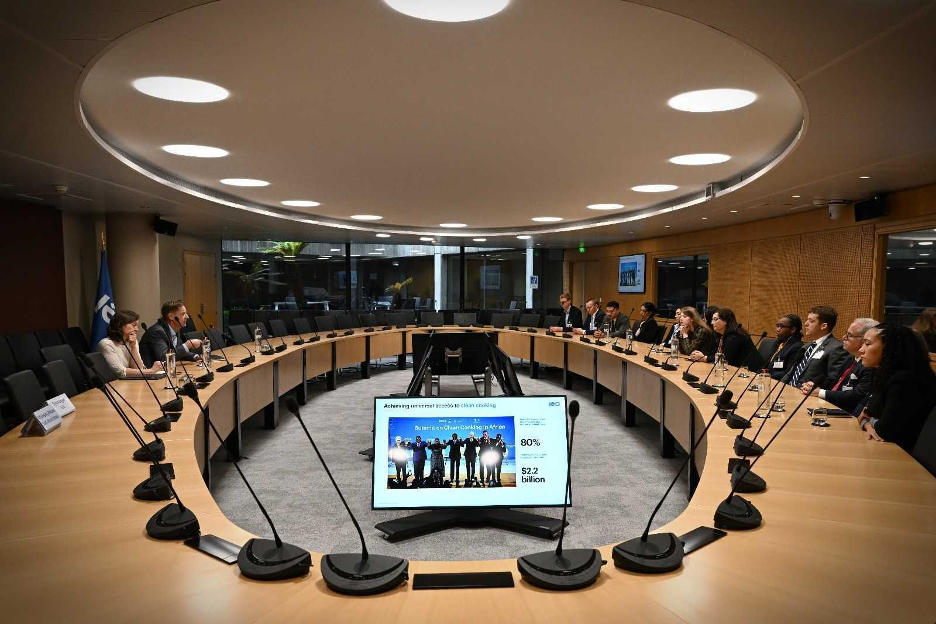
Our session at the IEA was eye-opening, revealing several key insights:
- Solar PVs and Electric Vehicles (EVs) are pivotal technologies driving the path to net zero and significantly reducing emissions.
- Clean energy transitions are not just about sustainability; they also offer a pathway to enhanced energy security, shielding nations from future crises.
- Energy technology and trade are deeply interconnected, with critical supply chain nodes concentrated in specific regions, impacting global energy dynamics.
Artificial Intelligence (AI) and energy have a symbiotic relationship. AI optimizes energy efficiency, particularly in transmission, while clean energy powers the AI systems driving these advancements.
Youth & Leaders Summit
We also attended the Youth & Leaders Summit at Sciences Po, where we heard from a variety of global leaders. The summit's theme, “What Future for International Cooperation?”, provided a few thought-provoking lessons. Hearing directly from leaders who navigate these global challenges brought real-world relevance to the theories we study.
Ngozi Okonjo-Iweala, Director-General of the World Trade Organization (WTO), shared her vision on the future of the multilateral trading system. Moderated by Steven Erlanger, the NYT chief diplomatic correspondent in Europe, the discussion with the DG covered the current controversies surrounding tariffs to geopolitical trade blocs. Okonjo-Iweala explained the nuanced role of tariffs as leverage tools rather than mere economic measures, stressing the importance of strategic communication, especially in dealing with influential figures like President Trump. Her advice on navigating tariffs—“Take a deep breath and use back channels”—highlighted the importance of patience and diplomacy in international trade disputes.
Okonjo-Iweala also addressed the evolving dynamics within the WTO, particularly China’s self-identification as a developing country and its implications for global trade rules. She candidly discussed the WTO’s dispute settlement system, which is often misunderstood as dysfunctional. Instead, she argued that the system has driven innovative solutions, including alternative arbitration methods pioneered by the EU. Her insights illuminated how geopolitical tensions influence international trade, making it clear that trade is not just about economics; it's about trust and diplomacy.
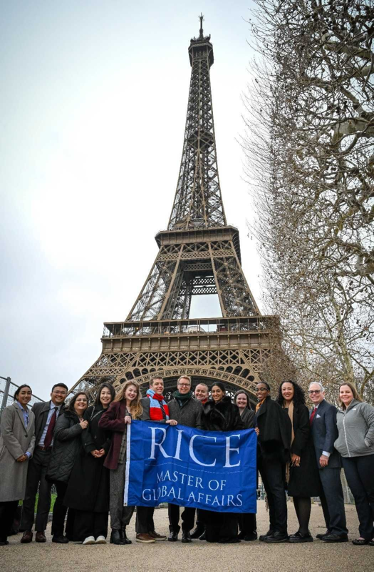
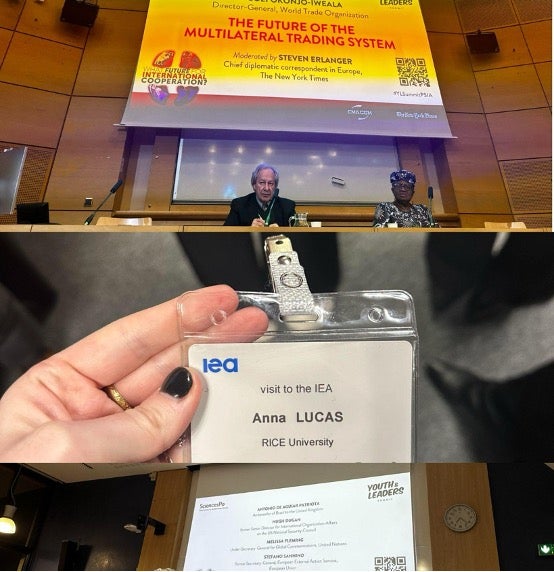
The second event of the day centered around a provocative question: “Do we still need the UN?” This high-stakes debate brought together an impressive panel of global leaders, including Ambassadors, Directors of the UN Security Council, and seasoned diplomats from both the UN and EU. The discussion delved into pressing issues such as bureaucratic inefficiencies within the UN and the controversial power dynamics of the UN Security Council, highlighting its unbalanced and inequitable structure. These critical reflections underscored international calls for institutional reform to ensure the UN’s continued relevance.
The summit was about engaging, questioning, and challenging the status quo. It reinforced my understanding that international cooperation is an evolving field, shaped by cultural diplomacy, strategic communication, and institutional resilience.
Why This Experience Redefined Learning for Me
Traditional coursework often teaches negotiation as a structured, rule-bound process. However, this experience in Paris showed me that negotiation is as much an art as it is a science. It requires emotional intelligence, active listening, and above all, the ability to think on your feet. This trip transformed me from a student of international affairs into a practitioner, ready to navigate the complexities of negotiating in all aspects of life.
Conclusion
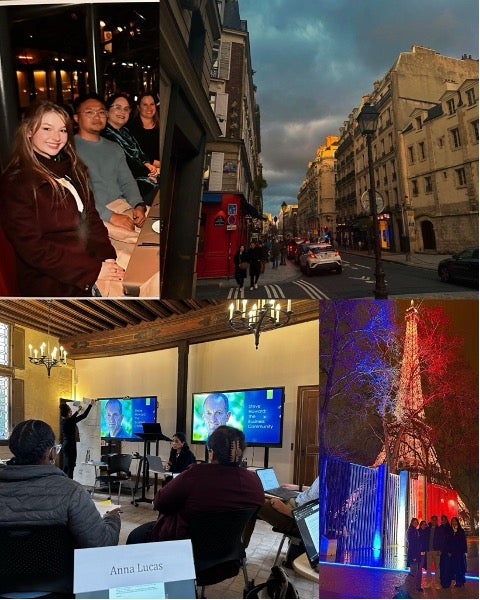
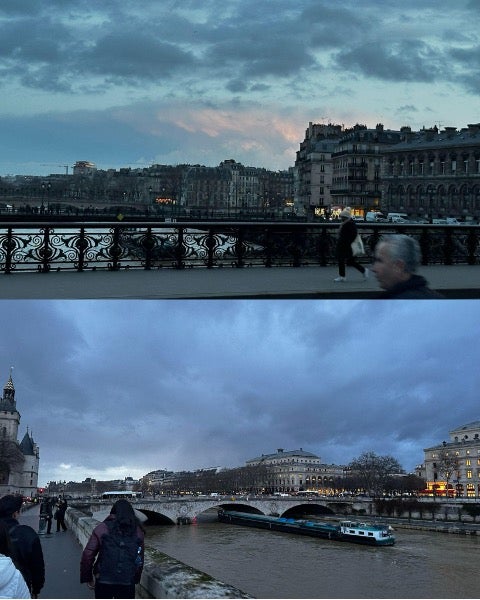
Before this trip, I tended to prepare for any negotiation simply by reviewing notes and anticipating arguments, thinking that the analytical preparation would be enough (which it certainly is necessary). After a week of immersive practice in Paris, I learned negotiation not by sitting in a classroom, but by challenging myself in real-world simulations, side-by-side with brilliant peers and under the guidance of experts. I gained not only new skills and confidence in handling international policy issues, but also a richer perspective on teamwork.
Perhaps the most rewarding outcome is that I’m taking these lessons beyond Paris. Back home, I find myself approaching discussions and conflicts differently – more patiently, more curiously, and with a mindset of finding mutual gain. This inaugural Paris negotiation trip is set to become an annual tradition for our program, and it’s easy to see why.
For current students and young professionals: seek out opportunities like this. Get out there and practice the art of negotiation in the real world. Trust me, you’ll often learn more on the ground than in a semester sitting in a lecture hall – and you’ll have an unforgettable adventure along the way.
Interested in learning more about the Master of Global Affairs program at Rice University? Feel free to reach out—I’m always happy to share my experiences and insights!
About the author:
Anna Lucas is a Master of Global Affairs candidate at Rice University with interests in international law, outer space, and emerging technologies. Anna received her B.Sc. in Biochemistry and Philosophy from Baylor University in 2022. She will be attending law school after completing her master's degree. Read more.
Further Reading:
My First Policy Hackathon: Lessons from MIT’s 7th Annual Event
An Honest Look at How I've Navigated Networking from Ground Zero
Building Resilience as a Graduate Student at Rice University

